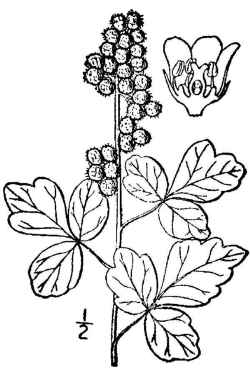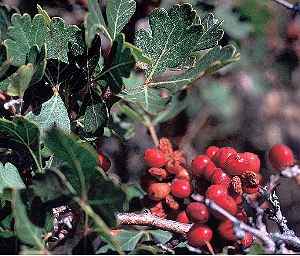Skunkbush Sumac, Squawbush Sumac
Scientific Name: Rhus trilobata Nutt.
Synonym: Rhus aromatica var. trilobata , Rhus aromatica var. flabelliformis , Schmaltzia trilobata
Family: Anacardiaceae

Britton, N.L., and A. Brown. 1913. Illustrated flora of the northern states and Canada. Vol. 2: 483.
Sunset®: 1-3,10-13
USDA: 4-6
Heat Tolerance: Difficult in the low deserts
Sun Exposure: Full sun to part shade
Origin: Western North America, from Oregon to Texas, Baja California
Growth Habits: Fast growing deciduous shrub, slow growing to 2 to 8 feet tall (0.6-2.4 m), generally below 4 feet tall, spreading to 6 to 10 feet (1.8-3 m); leaves with 3 leaflets, 2 to 3 inches long (5 to 7.5 cm), with paler underside, with a somewhat unpleasant smell when crushed, can look similar to poison oak
Flowers: Yellow flowers
Watering Needs: Little to no water when established, good drainage
Propagation: Seeds need to be scarified, softwood cuttings

Herman, D.E. et al. 1996. North Dakota tree handbook.
Blooming Habits:
The Squawbush Sumac is generally dioecious, flowering in late spring, with inconspicuous white to creamy yellow flowers
Fruiting Habits:
The fruits come on female plants, they are orange red, round and hairy, 0.25 inch long (6 mm). They ripen in the fall but persist through the winter. They are edible and can be used to make a lemonade tasting drink. Some people are allergic to the fruit.
Desert-Tropicals is dedicated to provide gardening advice, gardening ideas, and information about flower of all kind for landscape and collections.We try to check carefully the identification of the plants on the illustrations as well as the other information from the page, but occasionally errors do occur. if you notice anything that needs to be changed please contact us.Thanks.
© 1998-2020 Philippe Faucon, All Rights Reserved.